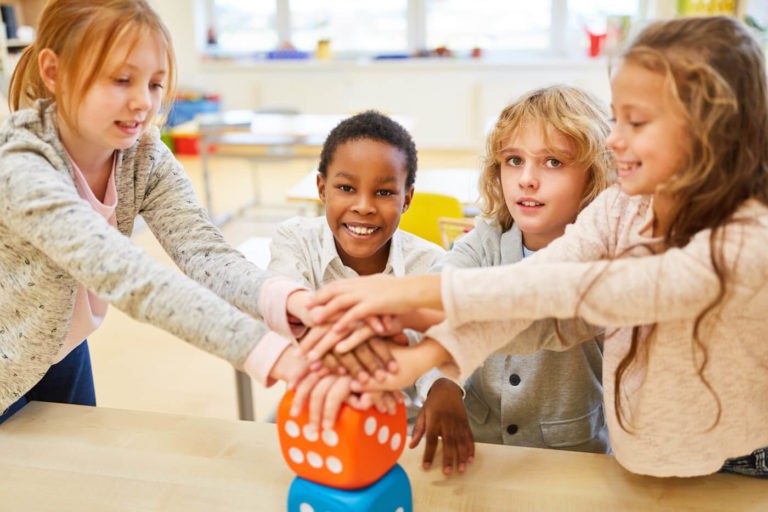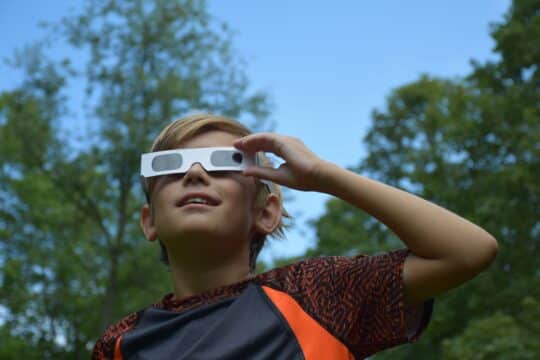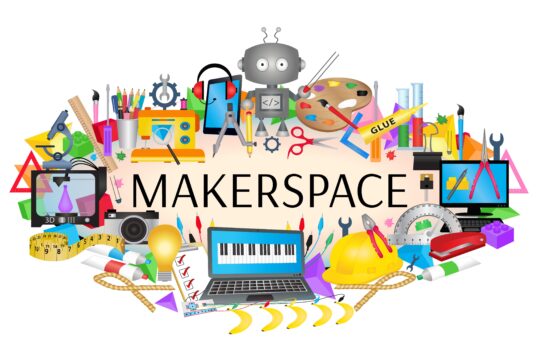The Importance of Team-Building for Students
Collaboration and cooperation are the key components of teamwork. These skills are extremely important to students of all ages and ensure that they can work together to complete a task successfully. Not only do team-building skills help students participate effectively in school, these skills will prove highly beneficial into adulthood as working with a team is required quite often in the workplace and postsecondary schools. Teachers can help foster these skills by creating team-building games and activities for their students.
Team-Building Activities for Middle School
Marshmallow and Toothpick Team Engineering Challenge
This team-building activity challenges students to build a tower using a limited numbers of materials consisting of marshmallows, toothpicks, dry spaghetti, tape, glue, yarn, or string. Students must work together to build a successful tower that does not fall over or lean. This activity may also be timed and turned into a competition to see which team can build the tallest tower.
Human Pretzel or Human Knot
Divide students into small groups of five or six students. Students should stand in a circle and take hands. The goal is to weave arms and bodies in and out in such a way that a knot or “pretzel” forms while remaining locked together holding hands. Because the biggest challenge is not being able to stop holding hands throughout the knot/pretzel making process, students must discuss the best plan of action to remain connected! Students should work together to successfully form the knot/pretzel and unweave themselves to return to their original positions in the circle. If groups unlock their hands, they may be required to start over or sit out while other groups finish the challenge.
Flying Pen (Word and Picture Challenge)
This activity is so exciting and extremely engaging! For this activity, teachers will need to provide a large piece of paper, string, tape, and a pen (or marker) for each group. The string should be tied or taped onto the pen enough times so that each team member is able to hold on to a piece of string that is connected to the pen. Once all team members are holding onto the string, the fun can begin! Teams should place the large piece of paper under their pen. Then, the teacher should give teams a word (vocabulary word, key terms, etc.) to write on their paper. The challenge is working together to move the pen with the string only to write the word. Students may only use their hands to move the string. This activity may also be repeated with pictures instead of words! When complete, students may share their team’s work.
Scavenger Hunt
Students should work in teams to find a series of items throughout the classroom. Teachers will want to include at least 20 items for the hunt. Items could be paper clips, specific books, erasers, a blue pen, a penny, tape, etc. Although this sounds easy enough, the challenge comes from the other teams competing to find the same items at the same time. Teams should devise a plan to quickly locate the items before the other teams do. When time is up, teams will share how many items they found.
Organize and Classify Objects
Using a similar list of items from the scavenger hunt activity, teachers should set out several items for display. Teams will be presented with this challenge: What do these items have in common? How can they be organized or classified into groups? Students will work with their teams to group the objects. They can group or classify objects however they would like, but they must be able to explain why they have done so. When time is up, allow teams a chance to present their classification of the objects and explain their reasoning with the class.
Fashion Show
On a table, lay out various materials such as construction paper, newspaper, wrapping paper, tape, glue, yarn, string, etc. Teams must create one outfit using only the materials set out by the teacher. Students should be allowed to work on their creations for roughly 30 minutes. When the time is up, teams will select one member to model their design in the class fashion show. To make things even more fun, the teacher may play music while students show off their designs in the fashion show! Students may vote on their favorite outfit at the conclusion of the show.
Virtual Team-Building Activities
Creating team-building activities for virtual students presents somewhat of a challenge and will undoubtedly look a little different from in-person team building activities, but it can most certainly be done. Many of the activities previously mentioned (such as Scavenger Hunt and Organize and Classify Objects) can also be adapted for virtual learners.
End of the World Challenge
Divide your virtual students into small groups. Groups should be presented with the following scenario: The world is ending, and you need to grab three supplies that will help you and your team survive. Each student must search throughout their homes to find three items that could be helpful. For instance, students might select blankets, tools, matches, rope, seeds, a flashlight, etc. Once each member of the team has selected their items, teams will be told that they may only keep five items. Students will work together and discuss which of their items would be the most beneficial to them in their efforts to survive.
Two Truths and a Lie
This classic game can quite easily be adapted for virtual classrooms. Divide students into small teams (roughly three or four students in all). Each member of the team will share three statements about themselves. Two of these statements will be truthful, while the other statement is entirely false! The other team members will try to decipher which pieces of information are true and which are false. Each team member should have an opportunity to share. This activity helps teams get to know one another better, and it provides students with virtual interaction in a fun and exciting way.
Follow the Details
For this activity, one member of the team will pick his or her favorite item. The item can be anything: a pair of shoes, food, toy, notebook, etc. The team member will describe his/her item with as much detail as possible (without sharing what the item is) while the other team members do their best to draw the item. Once finished, team members will share their drawings and reveal the item. Students will discuss how their drawings matched up to the real thing. This activity helps students realize the importance of being precise when presenting details.




